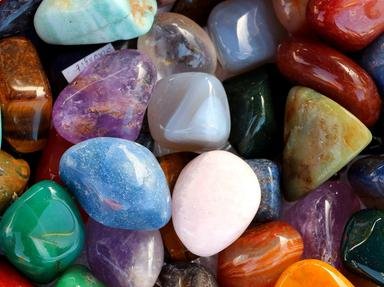Being made of calcium carbonate, a
will dissolve in vinegar - as illustrated by a well-known story about Cleopatra and her wager with Mark Antony.
Prized by many ancient cultures,
was ground into a powder to produce the extremely expensive ultramarine blue pigment, widely employed by medieval and Renaissance painters.
Though it is found in other colours than red,
was probably named after the bright red seeds of the pomegranate - which would make it etymologically related to the grenade.
In East Asia,
is a symbol of purity and harmony, and in China - where it was once abundant - was associated with the imperial family.
One of the most famous gemstones in the British Crown Jewels, known as the Black Prince's Ruby, is actually a
- as is the magnificent Timur ruby, also part of the Royal Collection.
Though synonymous with the colour black,
is named from its resemblance to a human fingernail, due to the stone's distinctive white banding.
Once regarded as the patron stone of thieves, to whom it was believed to grant invisibility, the
acquired the reputation of bringer of bad luck due to its depiction in a novel by Walter Scott.
For many Native American peoples of the Southwestern US,
holds special significance: in particular, the Apache believe that this vibrantly-hued stone will enhance an archer's aim and accuracy.
In Ancient Greece it was believed that
would protect its wearer from drunkenness: in fact, its name means "not intoxicated".
In Ancient Egypt, the land of the blessed dead - an eternal paradise without pain or suffering - was known as the "field of
", as the stone's green colour was associated with death and rebirth.
